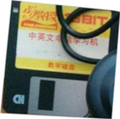Difference between revisions of "Unlicensed Mega Drive clones (Keyboard models)"
From Sega Retro
| Line 17: | Line 17: | ||
FDC-2000 MD CN Floppy.png|Floppy disk | FDC-2000 MD CN Floppy.png|Floppy disk | ||
Notavailable.svg|Manual | Notavailable.svg|Manual | ||
| − | Notavailable.svg|Advert<ref>https:// | + | Notavailable.svg|Advert<ref>https://www.sohu.com/a/387244740_120099891</ref> |
</gallery> | </gallery> | ||
Revision as of 15:39, 30 December 2023
In 1995, the designer of Game Genie, Yi-Rong Chen, got patent for Mega Drive 16-bit computer system, that looked like keyboard.[1] With help of Realtec, he created EZcom.
Educational Mega Drive consoles got second life in early 2000s, when bootleg sellers wanted to compete with 8-bit Nintendo educational computers clones. Most of these clones was intended for Chinese, Russian and CIS markets, where Sega was still popular.
New Star FDC-2000
Chinese clone using both cartridges and floppy disk, released around May 1995 by Tianjing Newstar Electronics., Ltd. (天津市新星电子) for the price of ¥1800[2]. The console was unsuccessful because of its high price.
Advert[3]
EPC-2001N
By Shenzhen Hot Sun Electronics Co., Ltd.
SB-978
By Subor.


